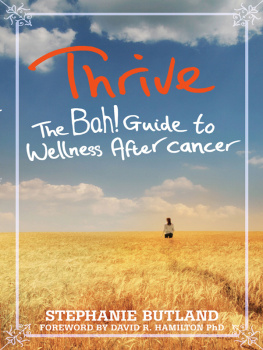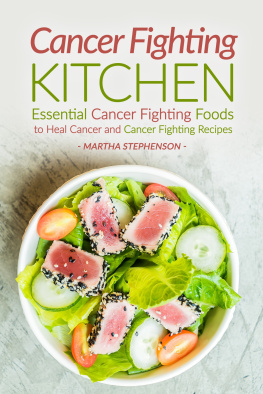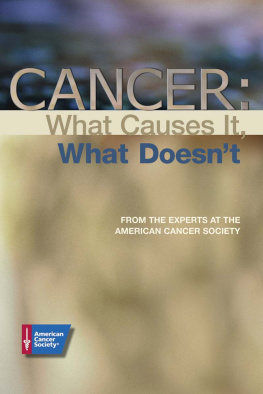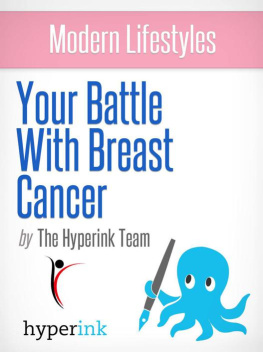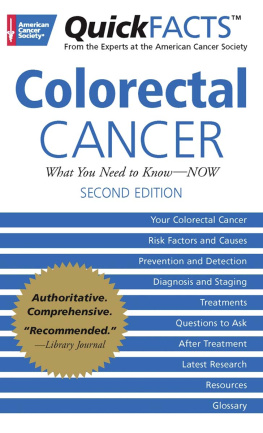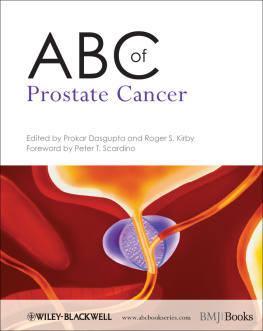
Taken by Alan Butland
Stephanie Butland was diagnosed with a breast cancer in October 2008. Since then shes had surgery, chemotherapy, radiotherapy and drug treatment, and now shes thriving. She lives in rural Northumberland with her family, near the place where she grew up, close to beaches, an ice cream parlour, and most of her family. (It would be heaven if it was a little bit warmer.) Her move back home after 20 years of living in London was one of the very positive side-effects of her dance with cancer.
Stephanie writes in her studio, which sits under the branches of an apple tree at the bottom of her garden. Between books and articles, she blogs and speaks about surviving cancer. Her aims are simple: to show that breast cancer is not necessarily the end of the world, and to try to make a dance with cancer easier for others by sharing the approaches and strategies that worked for her.
When shes not writing, Stephanie coaches thinking skills and creativity throughout Europe, and works with individuals to help them to think more effectively. In her spare time, she knits, spins, reads, bakes, goes to the theatre, takes long walks on quiet beaches, and makes excellent use of any shopping opportunity that comes her way.
Youll find Stephanies blog, and more information about her and her work, at www.bahtocancer.com
It was Jude who coined the phrase Bah! to cancer and, with it, a way for me to think, and cope, and live, and write.
Early and enthusiastic readers of this book included Alan Butland, Libby Turner, Gilly Meek, Denyse Kirkby, Rachel Pearce, Scarlet Long, Emily Medland, Diane Mulholland, Nathalie Giauque, Jen Walshaw, Cynthia Barlow-Marrs, Debby Hornburg, Nicola Kim, Susan Young and Maggie Dana. Im grateful to them all for their time, comments and re-readings, and in some cases for revisiting painful times for the sake of this book. Im grateful, too, to Bah! blog readers everywhere, who have been endlessly supportive and encouraging.
In publishing, Jessica Axe pointed me in the right direction. Jude Evans, Scott Pack, Emma Buckley and Nicola Morgan all gave time and advice that moved this book along. They did it with good humour, good grace and as though they like nothing better than reading cancer books on their days off. Im proud to call them friends.
Jane Smith, Emily Medland, Claire Marriott and Jane Wenham-Jones all contributed to the Blake Friedmann auction on my behalf, helping me to get the Best Agent Ever, Oli Munson. Hes a star. So is everyone else at Blake Friedmann, come to that.
The team at Hay House is everything a novice author would want in a publisher: enthusiastic, professional, tireless and kind. Special thanks to my editor, Carolyn Thorne, who made sure that this book remained my book.
Andrew Day asked Edward de Bono to write the Foreword for me, when he really should have been getting on with more important things. Edward wrote a generous Foreword, when he probably had better things to do, too. More than that, his simple and elegant approach to thinking has given shape and strength to my life and this book.
Emily, Nathalie and Susan are a trinity of strength, love and friendship, and have been Bah! book cheerleaders from the start.
Louise Williams had a good feeling, which meant a great deal.
Alan, Ned and Joy have walked every word of this book with me. It wouldnt be in your hand without them. Or without my parents, Michael and Helen Breeze, who taught me that I could do anything if I put my mind to it, and have quietly believed in me all my life.
The people Ive mentioned here are people whove helped with this book. Many more have helped me during my dance with cancer. There are too many to name, but I acknowledge you all with every day I am well. Thank you.
Stephanie Butland, 2011
The moral rights of the author have been asserted.
All rights reserved. No part of this book may be reproduced by any mechanical, photographic or electronic process, or in the form of a phonographic recording; nor may it be stored in a retrieval system, transmitted or otherwise be copied for public or private use, other than for fair use as brief quotations embodied in articles and reviews, without prior written permission of the publisher.
The information given in this book should not be treated as a substitute for professional medical advice; always consult a medical practitioner. Any use of the information in this book is at the readers discretion and risk. Neither the author nor the publisher can be held responsible for any loss, claim or damage arising out of the use, or misuse, or the suggestions made or the failure to take medical advice.
A catalogue record for this book is available from the British Library.
ISBN 978-1-84850-591-9 in print
ISBN 978-1-84850-679-4 in epub format
ISBN 978-1-84850-678-7 in Mobipocket format
For Alan, Ned and Joy,
without whom I would not be possible
Diagnosis:
In the beginning was the lump
HOW IT WAS
I found a lump in my right breast toward the end of September 2008.
Now, dont go thinking that I had some kind of breast-examination regime in the manner of a proper grown-up. I am the kind of person who, after buying shoes reduced from 100 to 50 in a sale, thinks that she has 50 to spend. At 37, I had only just got round to starting a pension. The reason I found the lump was that I could see it. I was walking past the mirror on my way to the shower, the light caught a distended area at the top of my right breast, and I thought Hmph! That spoils my line. And thats how my dance with cancer began.
But lets start at the moment before I walked past the mirror: Lets start from me, walking upstairs, thinking about a good hot shower and pyjamas and then sitting down with my husband, Alan, to do a crossword or talk about what we might do next weekend. If Id stopped and thought about my life then, as I took off my shoes and looked around our bedroom and wondered why it never stayed tidy for more than 10 minutes, Id have thought myself pretty lucky. My first 37 years had meandered along, without much of a plan, or much of a purpose, but despite this I had somehow acquired more than enough to make me more than happy. My second marriage was a delight every day, and my children from my first marriage, at 12 and 14, were growing into young adults I was proud to know and love. My career as a trainer was going well, I loved working, and I also loved the fact that I didnt need to be working all of the time. I was running a cake business and doing a psychology degree in my spare time. And I had finally shaken off the depression that had stalked me for more than a decade. Life was good.
But I didnt stop and think about my life and how much there was in it, because well, who does, when the going is good?
Ive met people who have told me that when they found lumps in their body, they Just Knew It Was Cancer. I didnt. I knew it was a lump, obviously. And I knew that there was no history of breast cancer in my family. I knew that I was too young to have breast cancer and I knew that most breast lumps are harmless/caused by the menstrual cycle/come and go. (Id obviously been paying more attention to posters in doctors waiting rooms than Id realized.) So, I didnt think the lump was a cancer. But I didnt think it wasnt cancer, either. That was a pretty big step for me. The first, as it happened, in a whole series of pretty big steps.
Edward de Bono: A White Hat and a lump
One of the most well-known de Bono tools is called the Six Thinking Hats, where each of six different coloured (notional) hats represents a different type of thinking. So, when a group embarks on Yellow Hat thinking, everyone will be looking for benefits in the given situation. Black Hat thinking is for risks, Green Hat for creativity. And White Hat is for information: What do we know? What do we need to know? Im often asked to work with teams who simply cannot make a decision about something, and believe that the problem is that the arguments for and against are too finely balanced, so they need a bit of specialist help (me). And in, ooh, about 126 out of 129 of those situations, the problem is something else entirely. There might be a lot of assumptions and suppositions clouding the decision-making process, but what almost always works is focusing back on what we know, and what we need to know. Most often, the difficulty is a missing critical piece of information that has been overlooked. Find out what it is by asking the right questions, by taking out the speculation and opinion and guesswork and the decision makes itself. So I know how much information matters.
Next page

